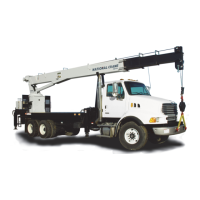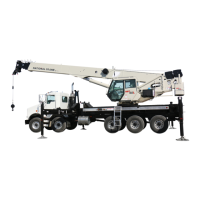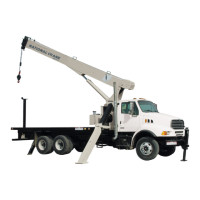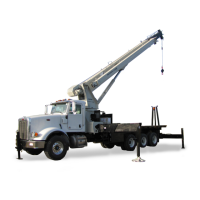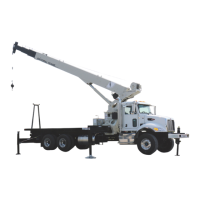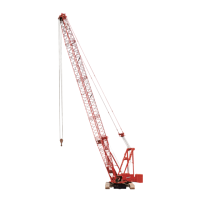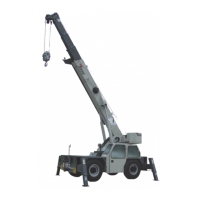2-26 Published 9-26-2018 Control # 646-02
SAFETY PRECAUTIONS NTC55 OPERATOR MANUAL
4. Connect the free end of the cable with a clamp (1) to a
good electrically conductive location on the frame.
PERSONNEL HANDLING
The American Society of Mechanical Engineers publishes
the American National Standard entitled, Personnel Lifting
Systems, ASME B30.23-2016:
This Volume establishes the design criteria, equip-
ment characteristics, and operational procedures
that are required when hoisting equipment within
the scope of the ASME B30 Standard is used to lift
personnel. Hoisting equipment defined by the
ASME 830 Standard is intended for material han-
dling. It is not designed, manufactured, or intended
to meet the standards for personnel handling equip-
ment, such as ANSI/SIA A92 (Aerial Platforms).
The equipment and implementation requirements
listed in this Volume are not the same as that estab-
lished for using equipment specifically designed
and manufactured for lifting personnel. Hoisting
equipment complying with the applicable Volumes
of the ASME B30 Standard shall not be used to lift
or lower personnel unless there are no less hazard-
ous alternatives to providing access to the, area
where work is to be performed. The lifting or lower-
ing of personnel using ASME B30-compliant hoist-
ing equipment is prohibited unless all applicable
requirements of this volume have been met.
This standard is consistent with the U.S. Department of
Labor, Occupational Safety and Health Administration
(OSHA) regulations for Construction that state, in
29CFRI926.1431:
General requirements. The use of a crane or der-
rick to hoist employees on a personnel platform is
prohibited, except when the erection, use, and dis-
mantling of conventional means of reaching the
worksite, such as a personnel hoist, ladder, stair-
way, aerial lift, elevating work platform or scaffold,
would be more hazardous or is not possible
because of structural design or worksite conditions.
Additional requirements for crane operations are stated in
ASME B30.5, Mobile and Locomotive Cranes, ASME B30.8,
Floating Cranes and Floating Derricks, and in OSHA
regulations 29CFRI910.180 for General Industry and
29CFRI926.1431 for Construction.
Use of a National crane to handle personnel is acceptable
provided:
• The requirements of the applicable national, state and
local regulations and safety codes are met.
• A determination has been made that use of a crane to
handle personnel is the least hazardous means to
perform the work.
• The crane operator shall be qualified to operate the
specific type of hoisting equipment used in the
personnel lift.
• The crane operator must remain at the crane controls at
all times when personnel are off the ground.
• The crane operator and occupants have been instructed
in the recognized hazards of personnel platform lifts.
• The crane is in proper working order.
• The crane must be equipped with a boom angle
indicator that is visible to the crane operator.
• The crane's Load Chart is affixed at the operator’s
station and readily accessible to the operator. The total
weight of the loaded personnel platform and related
rigging shall not exceed 50 percent of the rated capacity
for the radius and configuration of the crane.
• The crane is level within one percent of level grade and
located on a firm footing. Cranes with outriggers shall
have them all deployed following manufacturer's
specifications.
• The crane's Operator's Manual and other operating
manuals are at the operator’s station and readily
accessible to the operator.
• The platform meets the requirements as prescribed by
applicable standards and regulations.
• For rope suspended platforms:
- The crane is equipped with a hook that can be
closed and locked, eliminating the throat opening.
- The crane is equipped with a functional Anti-Two-
Block Device.
WARNING
Risk of accidents due to electric shock!
Ensure that the connections between the cable and the
clamp are electrically conductive.
Do not attach the clamp to parts that are screwed on, such
as valves, covers or similar parts.

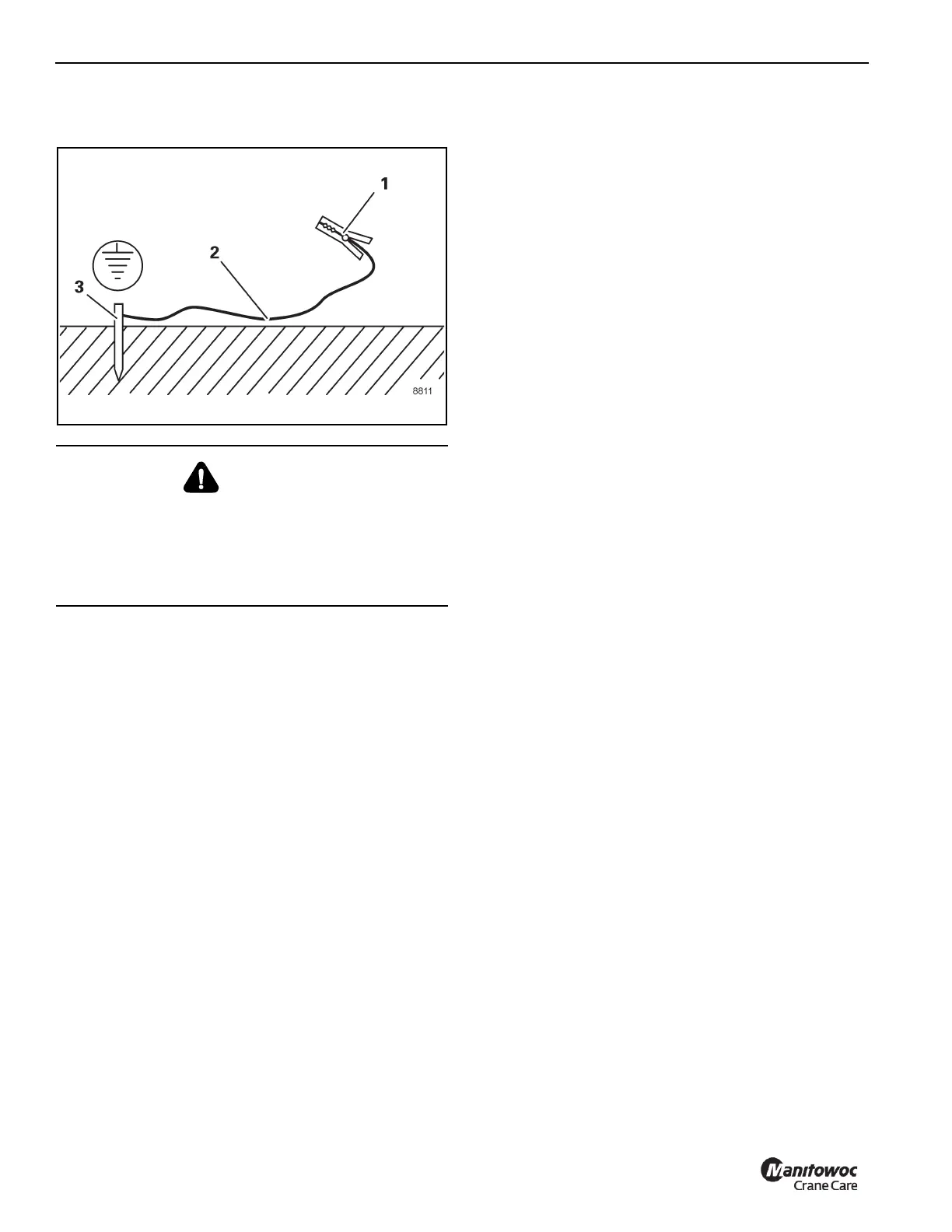